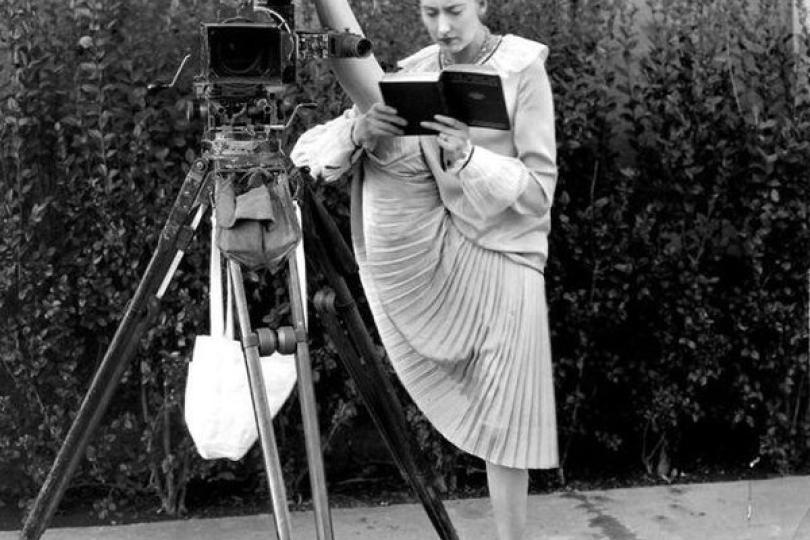Fanny Brice, Helen Morgan and Charlotte Greenwood

The early 20th Century musical theater had stars whose performance style will never been matched. Among them are Fanny Brice, Helen Morgan and Charlotte Greenwood.
Fania Borach
If you know anything about Fania Borach, better known as Fanny Brice (1891-1951), it’s through Barbra Streisand’s performances in Funny Girl (for which she shared the Oscar with Katharine Hepburn in The Lion in Winter), and in Funny Lady. While both of these films include some truths from her life, they’re essentially fiction.
Fanny Brice was born in New York, the third of four children. Her mother, Rose was Hungarian and her father, Charles was French-German. Her brother Lew was a performer, once married to actress Mae Clarke, (famous for her performance in The Public Enemy, where James Cagney shoves half a grapefruit into her face). Brice began working in Burlesque when she was 17. Florenz Ziegfeld invited her to headline his Ziegfeld Follies of 1910 and 1911. In the 1921 Follies, she introduced both her signature song, My Man and the popular Secondhand Rose, (both of which were edited to their refrains in Funny Girl).
Brice longed to be a film star. Her first, My Man is lost, but she starred in the delightful Be Yourself and opposite Judy Garland in Everybody Sing. She also played herself in The Great Ziegfeld and Ziegfeld Follies. Her greatest fame however, came from radio, where she appeared as her most famous character, Baby Snooks, for two decades. (We see Snooks briefly in Funny Girl). Daddy was played by Alan Reed, who would later voice Fred Flintstone. Hanley Stafford and Frank Morgan (The Wizard of Oz) also played Daddy. Recordings of these broadcasts are available from Amazon.com.
Nicky Arnstein and Billy Rose
Brice’s marriages are romanticized on film, but in truth, they were anything but romantic. To begin with, she was briefly married in her teens to barber Frank White.
Julius W. “Nicky” Arnstein, so elegantly played by Omar Sharif, was not the suave, sophisticated character written by Isabel Lennart. A professional gambler, he was sent to Sing-Sing shortly after Brice met him. They lived together for six years before their 1918 marriage. Brice was supportive and she always believed he was innocent. However, the phony bond deal presented in the movie did happen and he was sent to Leavenworth. It was Brice, not Arnstein who initiated the divorce, and when it was finalized, he disappeared from the lives of Brice and her children: Frances (1919-1992) and William (1921-2008).
Frances’ husband, Ray Stark, produced the stage and film versions of Brice’s life. Originally created for Kay Ballard (who did a nightclub act as Brice), it was later offered to Ann Bancroft. When Streisand gained attention in the early 1960s, the role rightfully went to her, because she strongly resembled Brice.
As the Depression arrived, Billy Rose presented the revue Crazy Quilt, which starred Fanny Brice. While Rose, as played by James Caan (a better written role than that of Nicky Arnstein), appears to be an inept amateur in Funny Lady, in truth he was a smooth professional, who, by this time, had already written such tunes as "Me and My Shadow," "Great Day" "I Found a Million Dollar Baby" and "Paper Moon" Crazy Quilt was not a success, and in 1938, Brice and Rose were divorced.
Life Stories
Besides the two Streisand films, in 1939, Alice Faye starred in Rose of Washington Square, based on the same material that later became Funny Girl. These films, as well as the CD Kay Ballard Sings Fanny Brice are available from Amazon.com.
Fanny Brice died Memorial Day weekend, 1951.
The Greatest Torch Singer
There were many Torch Singers (whose style is both sultry and bluesy). “Ma” Rainey, Bessie Smith and Fanny Brice are among them. However, one of the finest of torch singers was Helen Morgan (1900-1941), whose life resembles an extended torch song. Morgan began her career singing in Chicago speakeasies (including one owned by Billy Rose). Florenz Ziegfeld spotted her in the chorus of Sally and elevated her to stardom in the Follies. Having studied voice with the Metropolitan Opera, in 1927, Ziegfeld offered her the role of a lifetime, that of Julie LaVerne, the biracial singer in Oscar Hammerstein and Jerome Kern’s masterpiece, Show Boat. Morgan would reprise the role in the 1929 silent/sound film version, and the 1936 James Whale film, co-starring Paul Robeson, Hattie MacDaniel, Irene Dunne and Alan Jones. (This remains the better of the film versions; the 1951 MGM production eliminates important plot elements and some of the score).
Morgan also appeared in Kern and Hammerstein’s musical, Sweet Adeline in 1929). She was so popular in nightclubs that she opened her own, Chez Morgan, in 1927.
Stardom wasn’t without its troubles for Morgan. An alcoholic (one possible reason her renditions of “Bill” and “Can’t Help Lovin’ Dat Man” were so poignant). Her club was closed for liquor law violations. In June 1929, Morgan was freed, but was later arrested again and sent to jail. That year, Morgan also played a burlesque star in Rouben Mamoulian’s film Applause.
On radio, she starred in Broadway Varieties for 7 months. However, in the late 1930s, Morgan was hospitalized after she collapsing onstage during the George White's Scandals of 1942. Years of alcohol abuse had led to cirrhosis of the liver, and she died in October 1941.
Her life story was presented on Playhouse 90 in 1957. Directed by George Roy Hill, The Helen Morgan Story starred Polly Bergen and Sylvia Sidney. A film, based on the TV production was released the same year. It starred Ann Blyth and Paul Newman., TV
High-kicking Dancer
Broadway has its share of outstanding dancers, many of whom will eventually be featured in this column, but there was never a dancer quite like Charlotte Greenwood (1890-1977). Six feet tall and double jointed, she was known for her signature high kick – sideways. Known as “Lady Long Legs,” Greenwood attracted the attention of producer Oliver Morosco, who cast her in The Tik-Tok Man of Oz. She then starred in two plays, So Long Letty and Linger Longer Letty, both of which were written for her. She worked on stage and film with such talents as Betty Grable, Eddie Cantor, Buster Keaton and Carmen Miranda in such films as Down Argentine Way and several Busby Berkeley films, including The Gang’s All Here.
Greenwood was offered the role of Aunt Eller in the original Broadway cast of Oklahoma, which had been written with her in mind, but she had to turn it down. Following her performance as Juno in Cole Porter’s Out of This World, she played Aunt Eller in the film version.
Greenwood starred in The Charlotte Greenwood Show on radio for two years. Married twice, her second, to Martin Broones, lasted until his death in 1971. The remarkable Charlotte Greenwood died in late 1977. Her ashes were scattered at sea, and her personal papers were left to playwright William Luce (The Belle of Amherst, Barrymore, The Last Flapper).
In my last article, I commented that Erin Mackay, who played Dot in the Guthrie’s Sunday in the Park with George played the doll in the Met’s production of Tales of Hoffman. That role was played by Erin Morley. I regret the error.




